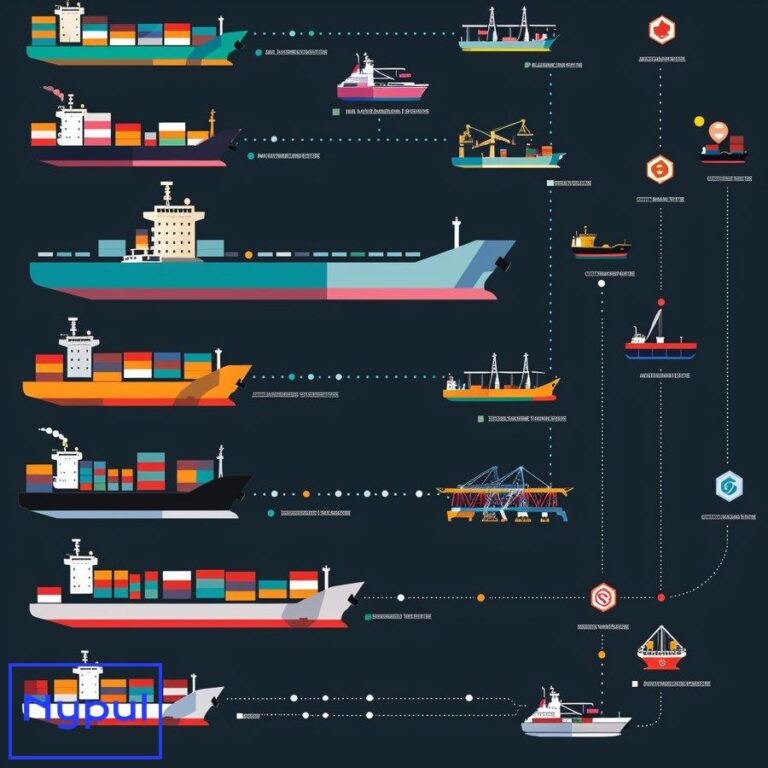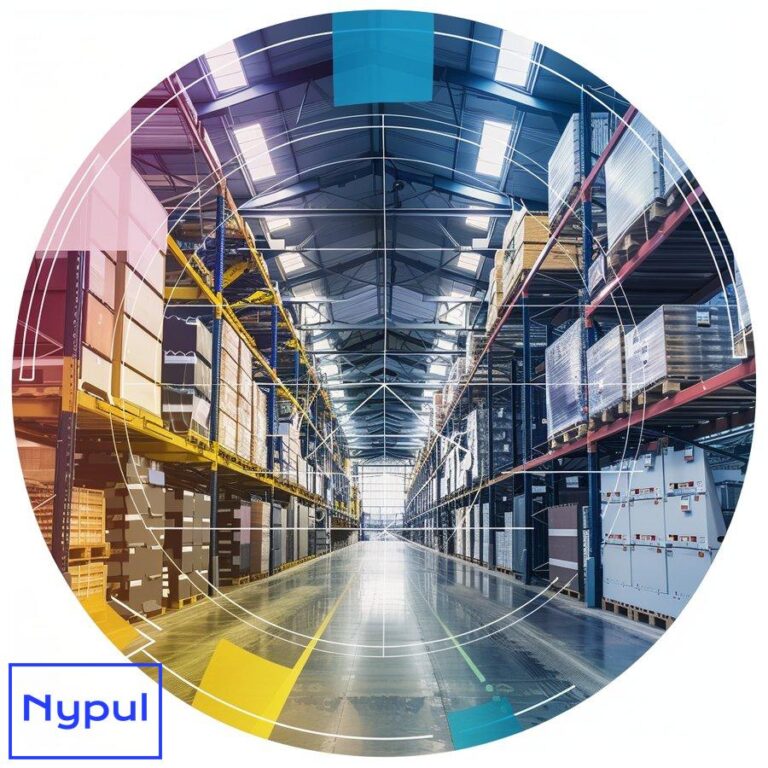What Is the Biggest Issue With Containerization
Why is container orchestration considered the biggest challenge in containerization?

Container orchestration, the automated management of containerized applications across a cluster of machines, is often cited as the most significant hurdle in containerization. While containers provide a lightweight and portable way to package and deploy applications, orchestrating them at scale introduces several complexities.
Scalability and High Availability
As the number of containers grows, ensuring scalability and high availability becomes increasingly difficult. Orchestration tools like Kubernetes aim to address this by automatically scaling containers based on demand and redistributing workloads in case of node failures. However, configuring and fine-tuning these mechanisms requires expertise and careful planning.
Service Discovery and Load Balancing
In a containerized environment, services need to discover and communicate with each other efficiently. Container orchestration platforms provide service discovery mechanisms, but setting up and managing these can be complex, especially in large-scale deployments. Load balancing traffic across containers also requires careful configuration to ensure optimal performance and resource utilization.
Rolling Updates and Rollbacks
Updating containerized applications without downtime is crucial for maintaining a seamless user experience. Orchestration tools support rolling updates, where new versions of containers are gradually deployed while old ones are phased out. However, managing these updates and handling potential rollbacks in case of issues can be challenging, particularly in complex application architectures.
| Aspect | Challenge |
|---|---|
| Scalability & High Availability | Automatically scaling and redistributing workloads at scale |
| Service Discovery | Efficiently discovering and communicating between services |
| Rolling Updates | Updating applications without downtime and handling rollbacks |
How do security vulnerabilities impact containerized environments?
Containerization has revolutionized application deployment, but it also introduces new security risks. Containers share the host system’s kernel, which means a vulnerability in the host can potentially compromise all containers running on it.
Image Security
Container images are often built using open-source components and libraries, which may contain known vulnerabilities. Scanning and securing these images is crucial to prevent attackers from exploiting weaknesses. Regularly updating images with security patches and using trusted image registries can help mitigate these risks.
Isolation and Access Control
While containers provide a level of isolation, they are not as secure as traditional virtual machines. If an attacker gains access to one container, they may be able to escape and compromise other containers or even the host system. Implementing strict access controls, network segmentation, and least privilege principles is essential to limit the blast radius of potential breaches.
Secrets Management
Containerized applications often require sensitive information like database credentials or API keys. Securely managing and distributing these secrets across containers is a significant challenge. Storing secrets in plaintext or hard-coding them in container images is a common mistake that can lead to data breaches. Using secure secret management solutions and encrypting secrets at rest and in transit is crucial.
Compliance and Auditing
Ensuring compliance with security standards and regulations in containerized environments can be complex. Containers’ dynamic nature makes it difficult to track and audit their activities. Implementing robust logging, monitoring, and auditing mechanisms is essential to detect and investigate security incidents in a timely manner.
What are the main difficulties in managing persistent data in containers?

Containers are designed to be ephemeral and stateless, but many applications require persistent data storage. Managing this data in containerized environments poses several challenges.
Data Portability
Containers are highly portable, but moving persistent data across different hosts or clusters can be difficult. Traditional storage solutions like local volumes are tied to specific nodes, making it hard to migrate data when containers are rescheduled or moved. Distributed storage systems like Ceph or Gluster can help, but they introduce additional complexity and overhead.
Data Consistency and Integrity
Ensuring data consistency and integrity across multiple containers accessing the same data is crucial. Without proper synchronization mechanisms, data corruption or inconsistencies can occur. Distributed locking and consensus algorithms like Raft or Paxos can help maintain data consistency, but implementing them correctly is non-trivial.
Backup and Disaster Recovery
Backing up and recovering persistent data in containerized environments can be challenging. Traditional backup solutions may not be container-aware, making it difficult to capture consistent snapshots of data across multiple containers. Implementing container-native backup and disaster recovery solutions that can handle the dynamic nature of containers is essential.
Performance and Scalability
Containerized applications often require high-performance storage to meet their demands. However, traditional storage systems may not be optimized for the scale and velocity of container deployments. Choosing the right storage solution that can provide the necessary performance and scalability while integrating seamlessly with container orchestration platforms is crucial.
How do networking complexities affect containerized architectures?
Networking in containerized environments introduces several complexities that can impact application performance, security, and manageability.
Network Segmentation
Containers running on the same host share the host’s network stack, which can lead to potential security risks if not properly segmented. Implementing network policies and microsegmentation to isolate containers and control their communication is crucial. However, managing these policies across a large number of containers and ensuring their consistency can be challenging.
Service Discovery and Load Balancing
In a containerized architecture, services need to discover and communicate with each other dynamically. Traditional load balancing solutions may not be suitable for the fast-changing nature of container deployments. Implementing container-native service discovery and load balancing mechanisms that can handle the scale and dynamism of containers is essential.
Overlay Networks
Containers running across multiple hosts require an overlay network to communicate with each other. Setting up and managing these overlay networks can be complex, especially in large-scale deployments. Choosing the right overlay network solution that provides the necessary performance, security, and scalability while integrating with the container orchestration platform is crucial.
Network Performance
Containerized applications often have high-performance requirements, and network latency can significantly impact their performance. Optimizing network performance in containerized environments requires careful configuration of network stack parameters, choosing the right network virtualization technologies, and minimizing the overhead introduced by container networking.
Why is monitoring and troubleshooting containerized applications so challenging?
Monitoring and troubleshooting containerized applications pose unique challenges due to their dynamic and distributed nature.
Ephemerality
Containers are designed to be ephemeral, meaning they can be created, destroyed, or moved across hosts frequently. This makes it difficult to track and monitor containers over time. Traditional monitoring solutions that rely on static IP addresses or hostnames may not be suitable for containerized environments. Implementing container-native monitoring solutions that can handle the dynamic lifecycle of containers is crucial.
Distributed Architecture
Containerized applications often consist of multiple microservices running across different hosts or clusters. Troubleshooting issues in such distributed architectures can be complex, as the root cause may span multiple containers or services. Correlating logs and metrics across containers and tracing requests through the entire application stack is essential for effective troubleshooting.
Resource Contention
Containers share the host system’s resources, such as CPU, memory, and network bandwidth. Monitoring resource utilization and identifying contention between containers can be challenging. Overcommitted resources can lead to performance degradation or even application failures. Implementing granular resource monitoring and alerting mechanisms is crucial to proactively identify and resolve resource contention issues.
Lack of Visibility
Containers provide a high level of abstraction, which can make it difficult to gain visibility into their internal state and behavior. Debugging issues inside containers may require accessing the container’s filesystem or executing commands within the container. Implementing secure and auditable mechanisms for container introspection and debugging is essential.
What are the key issues in container image management and versioning?
Container images are the building blocks of containerized applications, and managing them effectively is crucial for ensuring application reliability, security, and consistency.

Image Sprawl
As the number of container images grows, managing them becomes increasingly complex. Image sprawl can lead to storage inefficiencies, security risks, and maintenance overhead. Implementing image lifecycle management policies, such as regularly pruning unused images and promoting immutable image tags, can help mitigate these issues.
Versioning and Reproducibility
Ensuring consistent and reproducible deployments is essential in containerized environments. However, managing image versions and dependencies can be challenging, especially when multiple teams are involved. Implementing strict versioning policies, using immutable image tags, and maintaining a central image registry can help ensure reproducibility and avoid version conflicts.
Security and Vulnerability Management
Container images may contain security vulnerabilities that can compromise the entire application stack. Regularly scanning images for known vulnerabilities and applying security patches is crucial. However, managing vulnerabilities across a large number of images and ensuring timely updates can be complex. Implementing automated vulnerability scanning and patching processes is essential.
Image Distribution and Replication
Distributing container images across multiple hosts or clusters can be time-consuming and bandwidth-intensive. Efficient image distribution and replication mechanisms are essential to ensure fast and reliable deployments. Implementing content delivery networks (CDNs) or peer-to-peer distribution protocols can help optimize image distribution and reduce network overhead.
How does resource allocation and optimization pose a problem in containerization?
Efficient resource allocation and optimization are critical for ensuring the performance, scalability, and cost-effectiveness of containerized applications.
Resource Overcommitment
Containers share the host system’s resources, and overcommitting these resources can lead to performance degradation or even application failures. Striking the right balance between resource utilization and application performance is crucial. Implementing resource quotas and limits can help prevent resource overcommitment, but setting these limits correctly requires careful analysis and tuning.

Resource Fragmentation
As containers are dynamically scheduled and rescheduled across hosts, resource fragmentation can occur. This means that resources may be underutilized or unevenly distributed across the cluster. Implementing intelligent scheduling algorithms and bin-packing techniques can help minimize resource fragmentation and improve overall resource utilization.
Noisy Neighbor Problem
In a containerized environment, multiple applications may share the same underlying resources. If one application consumes a disproportionate amount of resources, it can impact the performance of other applications running on the same host. This is known as the noisy neighbor problem. Implementing resource isolation and quality of service (QoS) policies can help mitigate this issue.
Vertical and Horizontal Scaling
Containerized applications often need to scale dynamically based on workload demands. Scaling can be done vertically (adding more resources to existing containers) or horizontally (adding more container instances). Choosing the right scaling strategy and implementing automated scaling mechanisms requires careful consideration of application architecture, resource constraints, and cost implications.
The skill gap and organizational challenges in container adoption
Adopting containerization requires a significant shift in the way applications are developed, deployed, and managed. This shift often exposes skill gaps and organizational challenges that can hinder successful adoption.
Lack of Expertise
Containerization introduces new technologies, tools, and practices that require specialized skills and knowledge. Many organizations struggle to find or train personnel with the necessary expertise in container orchestration, networking, security, and monitoring. This skill gap can lead to misconfigurations, performance issues, and security vulnerabilities.
Cultural Resistance
Adopting containerization often requires changes to existing processes, roles, and responsibilities. This can lead to cultural resistance, especially in organizations with entrenched traditional IT practices. Overcoming this resistance requires strong leadership, clear communication, and a willingness to embrace change.
Siloed Teams
Containerization blurs the lines between development and operations, requiring close collaboration between teams. However, many organizations have siloed teams with different priorities, incentives, and metrics. Breaking down these silos and fostering a culture of collaboration and shared ownership is essential for successful container adoption.
Legacy Application Integration
Not all applications are suitable for containerization, especially legacy applications with monolithic architectures or tight coupling to specific infrastructure. Integrating these applications with containerized services can be challenging and may require significant refactoring or re-architecting. Developing a clear migration strategy and prioritizing applications based on their suitability for containerization is crucial.
In conclusion, while containerization offers numerous benefits, it also introduces significant challenges in areas such as orchestration, security, data management, networking, monitoring, image management, resource optimization, and organizational readiness. Addressing these challenges requires a combination of technical expertise, best practices, and cultural change. By carefully navigating these challenges and investing in the necessary skills and tools, organizations can unlock the full potential of containerization and achieve faster, more reliable, and more scalable application deployments.




